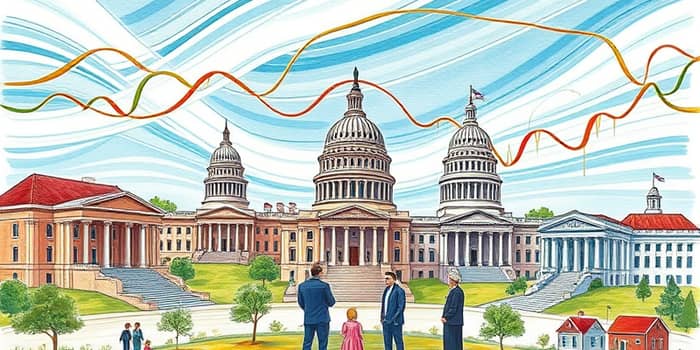
As the 2025-2026 fiscal year dawns, governors and legislators across the nation are wrestling with complex tradeoffs. Moderate economic growth and inflationary pressures are colliding with rising service costs, prompting bold revenue and spending decisions.
State governments are finalizing budgets ranging from record highs to cautious trims. In many places, governors aim to balance the books by balancing public service expansion and fiscal restraint through a mix of new revenue measures and targeted spending shifts. While some states boast healthy reserves, others brace for structural fiscal pressures mounting over time as core costs outpace growth.
Uncertainties about federal funding, inflation, and slower tax collections have intensified debates. Lawmakers face questions about how to finance K-12 education, higher education, healthcare, infrastructure, and pensions without saddling residents with unsustainable tax burdens.
Illinois is proposing a historic $55.2 billion budget for FY 2026, up $2 billion from FY 2025. General fund revenues are expected to reach $55.45 billion, a 2.9% increase over current estimates. Yet, achieving these totals requires a series of revenue actions and cost-balancing moves.
The package includes more than $800 million in new tax and revenue measures, including:
Expenditure priorities are clear: increased funding for K-12 and early childhood education, higher education campuses, Medicaid, retiree health benefits, and government worker pensions.
To close the gap between ambitious spending and revenue forecasts, the state plans to:
Despite claims of cost containment, Illinois’s budget has grown by $16 billion since 2019 and features over 50 tax increases during that period. Critics warn that reliance on one-time sweeps and delayed payments risks creating persistent budget gaps.
Tennessee’s recommended $59.5 billion budget for FY 2025-2026 reflects a $1.1 billion decrease in total funding compared to the current year. However, state-funded appropriations rise by $2.4 billion as federal pandemic relief recedes.
Revenue trends show a slowdown: general fund collections are projected to grow at a negative 1.91% rate this year based on midyear reviews. Lawmakers have taken a cautious stance, emphasizing core services and strategic investment while guarding against revenue shortfalls.
Key components of Tennessee’s budget include:
Spending focuses on infrastructure and highways, sustaining higher education support, and maintaining baseline health and human services. By contrast with some states’ aggressive tax hikes, Tennessee is relying on conservative growth assumptions and cautious capital spending.
Across the country, states are deploying a variety of short-term and structural strategies to keep finances afloat:
These tactics can provide breathing room, but they also carry risks. Reliance on nonrecurring revenue sources can lead to gaps in future budgets, while program delays may spark stakeholder backlash.
As pandemic-era assistance phases out, many states confront declines in federal funding. Tennessee alone expects a $4.7 billion drop, forcing greater reliance on state coffers. Illinois, while buoyed by modest revenue growth, remains vulnerable to national debates over deficit reduction and federal program cuts.
Lawmakers nationwide are keenly aware that federal budget negotiations in Washington could reshape intergovernmental transfers. With discussions focusing on spending restraint and entitlement reform, states may face tougher choices on Medicaid, transportation grants, and education aid.
This evolving backdrop underscores the need for long-term planning rather than repeated one-off fixes. Experts argue that durable reforms—such as updating tax codes, streamlining entitlement programs, and investing in economic development—offer more sustainable paths to fiscal stability.
The 2025-2026 budget cycle presents a pivotal moment for state governments. With uncertain revenues, rising service demands, and shifting federal priorities, officials must weigh the merits of new taxes against spending cuts and temporary patches.
For citizens and communities, the outcomes will shape schools, hospitals, roads, and retirement security. While some states embark on ambitious funding expansions, others adopt a more cautious posture, underscoring the diverse political and economic landscapes across the nation.
Ultimately, the budgets of the coming year will reveal which states opt for structural reforms and which lean on stopgap devices. In doing so, they will define not only immediate service levels but also the long-term fiscal health of their economies.
References













